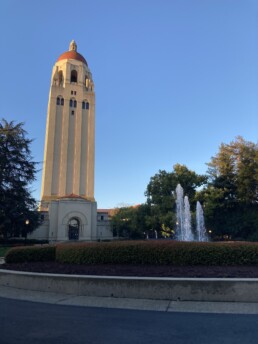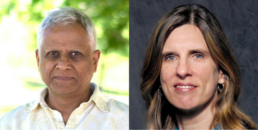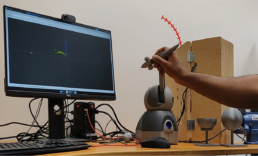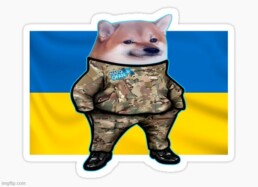Kahlert School Ph.D. Student Noelle Brown Presents Work on Ethics & Technology at the Embedded Ethics conference
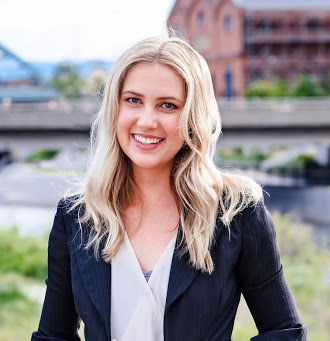
How can we teach computer science students about the ethical implications of technology? PhD student Noelle Brown is synthesizing the state of the field regarding this issue and presented her work at Stanford’s Embedded Ethics conference held on March 7, 2023 at Stanford University. This invitation-only conference shared strategies and research on teaching ethics and responsible computing within undergraduate computer science courses. Brown attended the conference with her advisor, professor Eliane Wiese.
“Noelle was the only student to present. It’s great to see her as an emerging leader in our field."
- Prof. Elian Wiese
Brown and Wiese’s broader research explores how to teach ethics to computer science students in a way that deepens technical rigor. They want to make it easier for computer science faculty to create instruction and assignments that weave ethics across the computer science curriculum. Rather than designing one-off assignments, Brown and Wiese aim to create an instructional design process that any computer science instructor can follow to make materials suited to their courses.
Brown presented a work-in-progress lightning talk, in which she discussed how researchers have reported on teaching ethics within computing over the past 40 years. Brown worked with her collaborator Benji Xie, an Embedded EthiCS Postdoc Fellow at Stanford, to read and analyze nearly 100 research papers on the topic.
Wiese described the motivation behind this project: “This is a great time to reflect on the state of research on incorporating ethics into computer science education. Our community has called for more ethics in computer science, and we’re doing it. Now that we know it’s possible in many different formats, our field can start investigating more specific questions, such as what formats are most effective for what purposes.”
Brown’s talk offered insight into how the computer science field has historically embedded ethics within technical courses, providing calls to action based on her results. “Even though we have been talking about teaching ethics in computer science for decades and many people understand why it is important to teach students how to think about their responsibilities as programmers, there are no guidelines for how an instructor should achieve this objective. By systematically analyzing the existing literature, we found that many people are teaching ethics, but they are doing it in a lot of different ways. Synthesizing this information provides instructors and educators with more focused research directions, such as defining what they are teaching as ‘ethics’ and suggesting ways to overcome the associated challenges,” Brown said.
The conference brought together academics from a variety of institutions who embed ethics within their technical courses. The event included panels and talks from experts on embedded ethics, discussing program approaches and goals, institutional buy-in, and instructional strategies. Attendees included a mix of academics from computer science and philosophy, emphasizing the importance of collaborations between these two disciplines. “The conference pulled together researchers and instructors from different institutions, fields, and perspectives, and fostered a healthy exchange of ideas,” Wiese shared. Some of the ideas explored at the conference include the importance of historical context for understanding algorithmic discrimination, the need for rigorous assessment of student learning, and shared resources for embedded ethics.
A recording of the conference is available online. Brown’s presentation can be found from 3:33:25 - 3:39:40.
National Science Foundation Selects the Kahlert School to Serve as the Site for Engaging Undergraduates in Research on Trust and Reproducibility of Intelligent Computation
The National Science Foundation has awarded a prestigious new research experience for undergraduates (REU) site to the Kahlert School of Computing entitled Trust and Reproducibility of Intelligent Computation (TREU). Led by Principal Investigator Prof. Ganesh Gopalakrishnan and Co-Principal Investigator and Director of the School Prof. Mary Hall (pictured above), the TREU REU site will train undergraduate students over 10 weeks during each of its three years. The selected students will learn valuable technical and soft skills to help them to become future leaders in the field of intelligent computational research.

Top Row: Profs. Bhaskara, Eide, Elhabian
Middle Row: Profs. Phillips, Sadayappan, Sundar
Bottom Row: Profs Wiese, Wiese, Zhang
“TREU offers our trainees a unique opportunity to learn about four prominent driving forces behind today's scientific research and connected living, namely high-performance computing and machine learning, cloud, and wireless networking. These topics are prominently represented at the Kahlert School through world-class faculty members and state-of-the-art research facilities. The learning experience will be contextualized and delivered around the themes of responsible research and inclusion.”
- Prof. Ganesh Gopalakrishnan, Principal Investigator
The TREU program will introduce trainees to the basics of many exciting and crucially important computer science research areas. The program emphasizes hands-on demonstration of these technologies and methods to enhance trust and reproducibility. In addition to a wide variety of technical skills, the program will equip trainees to apply the skills in an ethical, inclusive manner.
Students will gain exposure to several concepts throughout the program. Highlights include High-Performance Computing (HPC), image classification using machine learning, advanced wireless networking in the context of the POWDER project, ethics & inclusion, and research training. For a more detailed description of course modules, please visit https://treu.cs.utah.edu/. In addition, trainees will have frequent opportunities to help build their social and academic network while taking advantage of Utah’s abundant and unique natural resources.
“TREU allows the Kahlert School of Computing to build on the multi-million dollar research infrastructure that is University of Utah is uniquely blessed with thanks to prior flagship NSF projects such as Cloudlab and POWDER. We are excited to invite top students from across the nation to spend ten weeks on our beautiful campus over three successive years, and experience world-class research in a picture postcard setting. As is well-known, individuals who have spent time at the University of Utah are our best long-term ambassadors.”
- Prof. Mary Hall, Director, Co-Principal Investigator
TREU welcomes applications from undergraduates across the country at all levels. Students from backgrounds underrepresented in computer science, sophomores or juniors with knowledge of computer science basics, and students interested in graduate school are especially encouraged to apply. Applications close on April 15, 2023.
Prof. Jason Wiese Receives Google Award for Inclusion Research
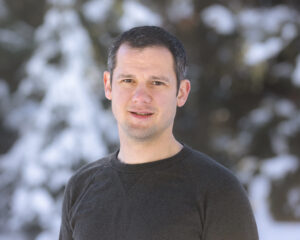
Kahlert School of Computing Assistant Professor Jason Wiese is a recipient of the 2022 Google Research Award for Inclusion Research aimed at developing personal tracking technology that addresses a major challenge faced by power wheelchair users: avoiding pressure ulcers. The research supported by the US $60K grant from Google will address the challenges they uncovered in their previous work in which they conducted interviews with users of powered wheelchairs to understand their experiences in adhering to the clinical recommendations and performing pressure reliefs throughout their days.
Personal tracking technologies, such as the activity trackers found on many phones and smartwatches, diet tracking applications, symptom trackers, and personal finance tools, have become commonplace. People use these technologies to gain better self-insight and make or sustain changes that improve their lives. Early versions of these tools typically focused on activities such as counting steps, which excluded people who use a wheelchair.
Over time, these tools have become more inclusive, for example, by adding the ability to track wheelchairs propelled manually by their users. However, as Professor Wiese’s recent work has shown, users of powered wheelchairs remain excluded from such personal tracking technologies and from research in general. To address this disparity, Prof. Wiese and his Ph.D. student Tamanna Motahar are collaborating with the Nielsen Rehabilitation Hospital to design and implement personal tracking technology with the goal of exploring better ways to serve users of powered wheelchairs. Professor Wiese explains: “Our goal is to make sure we design technology to specifically serve people who use powered wheelchairs, rather than assume that their needs are addressed by solutions that work for those who use manual wheelchairs or those without disabilities.” The research will leverage the incredible potential for technology designed with and for those who use powered wheelchairs and create a positive impact on their lives.
One major application for such technology relates to pressure ulcers, a common issue faced by individuals who use wheelchairs of all sorts. The mechanism behind a pressure ulcer is similar to bed sores, which can occur if someone lays in a bed for too long without getting out or changing position. In the context of wheelchairs, pressure ulcers can occur if somebody sits in their wheelchair for too long without changing position, shifting weight, or getting out. While users of manual wheelchairs and people with sufficient upper-body strength can do stretches or shift their weight to relieve pressure, it’s more complicated for people who have less upper body strength or function. In these cases, a “pressure relief” often requires tilting the chair back to a 45-degree angle for two minutes so that weight is shifted onto the person’s back.
Current clinical guidelines suggest that the procedure be performed every twenty minutes while a person is in the wheelchair, resulting in an estimated 30-50 pressure reliefs per day. Yet, people in wheelchairs may intentionally skip a pressure relief if it is infeasible or socially awkward to perform it in a given situation, such as being in a crowded place, traveling in a vehicle, participating in a meeting, etc. Often, they miss a pressure relief because they simply forget.
Wiese and Motahar will tackle this problem by exploring solutions for detecting pressure reliefs as well as providing users of power wheelchairs with real-time context-aware reminders and feedback. Their goal is to enable these individuals to view and reflect on their own behavior and its effect on their health and wellbeing.
Award-Winning Tentacle Robots Help Create Less Invasive Surgeries
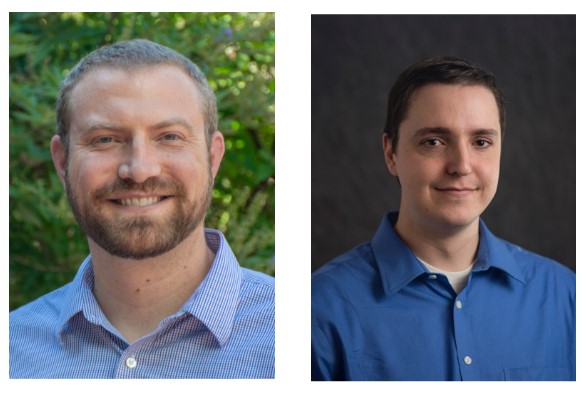
Assistant professor Alan Kuntz and recent PhD graduate Michael Bentley from the University of Utah Kahlert School of Computing and Robotics Center, have won the 2022 IEEE Access Best Video Award (Part 1). This award is given to the best video of papers submitted within a 6-month period to the multidisciplinary open access journal, IEEE Access. The award winning video and accompanying research paper is based on the research group’s meaningful steps toward answering the primary question that drives Prof. Alan Kuntz’s research group: “Can flexible, tentacle-like robots make medical interventions and surgery less invasive?”
By providing a less invasive alternative to traditional surgical methods, this research has the potential to impact the lives of surgery patients all over the world. Dr. Richard N. Yu, a physician and researcher with The Boston Children’s Hospital, says that when surgeries are less invasive, “people recover tremendously faster with better cosmetic appearances.” Dr. Kuntz and Dr. Bentley’s research could help create quicker surgeries with fewer complications, smaller scars, and faster recovery times.
But just how does their technology work? “Flexible, tentacle-like robots, which we call ‘continuum robots,’ are capable of moving along naturally-occurring anatomical passages such as sinuses or bronchial trees, as well as curving around anatomical structures in other areas of the body,” said Kuntz, elaborating that the effort “combines the design of these continuum robots with the algorithms that make them easy-to-use for physicians.”
Kuntz’s continuum robots can be fabricated largely on everyday 3D printers, but can be very difficult to control manually due to the complex ways in which they move. Enabling users to control these robots with a haptic device, a kind of three-dimensional computer mouse, is the focus of the award-winning work.
The paper, a collaboration with associate professor Caleb Rucker at the University of Tennessee, presents a new method in a class of robotics algorithms called “motion planning,” and provides a way for the robot to move smartly around obstacles in its environment. This method enables a user to control the tip of the robot while the algorithm plans motions that prevent the robot from colliding with the patient’s body in ways the user doesn’t intend. The algorithm can be more than 17,000 times faster than prior approaches.
Prof. Kuntz and his co-authors propose deploying the robot in a patient’s pleural space (i.e., the space between a person’s chest wall and a collapsed lung) to help diagnose the cause behind the lung’s collapse. However, the researchers believe that the method has the potential to impact many other types of medical procedures throughout the body.
“Our method now lets a person control this robot in ways not previously possible, which may pave the way for its use in minimally invasive medical procedures” Kuntz says.
Prof. Kogan Receives Grant from Meta to Investigate Meme-based Campaigns to Counter Online Propaganda
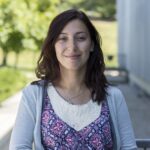
Kahlert School of Computing Assistant Professor Marina Kogan has received a grant of US $99,562 through Foundational Integrity & Social Impact Research program of Meta to investigate emotionally-driven, meme-based campaigns for countering online propaganda.
Memes, which have risen in popularity over social media platforms, are images with humorous captions shared over social media. The prominent meme creator Saint Hoax calls them “editorial cartoons for the internet age” and notes that each individual meme often contains many layers of complex meaning. This meaning is derived from the social context just as much as the actual content itself. While the history of memes has been largely dominated by social commentary and humor, Dr. Kogan’s research aims to shine a light on their power in battling misinformation and propaganda. The research will focus on the practices and strategies of campaigns where social media users engaging in fact-checking abandon rational argumentation in favor of more visceral methods of communication such as memes.
“There is enough evidence that in the face of intense state-sponsored campaigns, standard fact-based approaches to combating propaganda often fall short. This investigation is an exploration of more emotionally-driven, meme-based anti-propaganda campaigns that appear to be succeeding in online environments,” Kogan said.
One such atypical, successful campaign arose in the context of state-sponsored Russian propaganda during the ongoing invasion of Ukraine that began in February 2022. NAFO, a decentralized, grass-roots movement of Ukrainian and international social media users who focus on combating Russian propaganda, used comical, nonsensical memes to expose the absurdity of original posts containing propaganda. These meme-based campaigns have proven to be an effective tool on the information battleground.
Supported by the grant from Meta, Dr. Kogan plans to analyze the visual and discursive strategies used by the NAFO movement to combat Russian propaganda with meme-based approaches. In addition, she will estimate the success of the campaign by examining whether audience engagement and responses to propaganda posts that have been countered with the meme-based approaches differ from reactions to propaganda that is not countered in such a manner. Prof. Kogan believes that the methods developed in the course of this research can be applied to a broader range of emotion-driven movements, enabling her to explore creative strategies to counter the threat posed by various forms of misinformation and various degrees of authoritarianism.
Mu Zhang Receives $65K Grant from Cisco to Enhance the Security of Smart Contracts
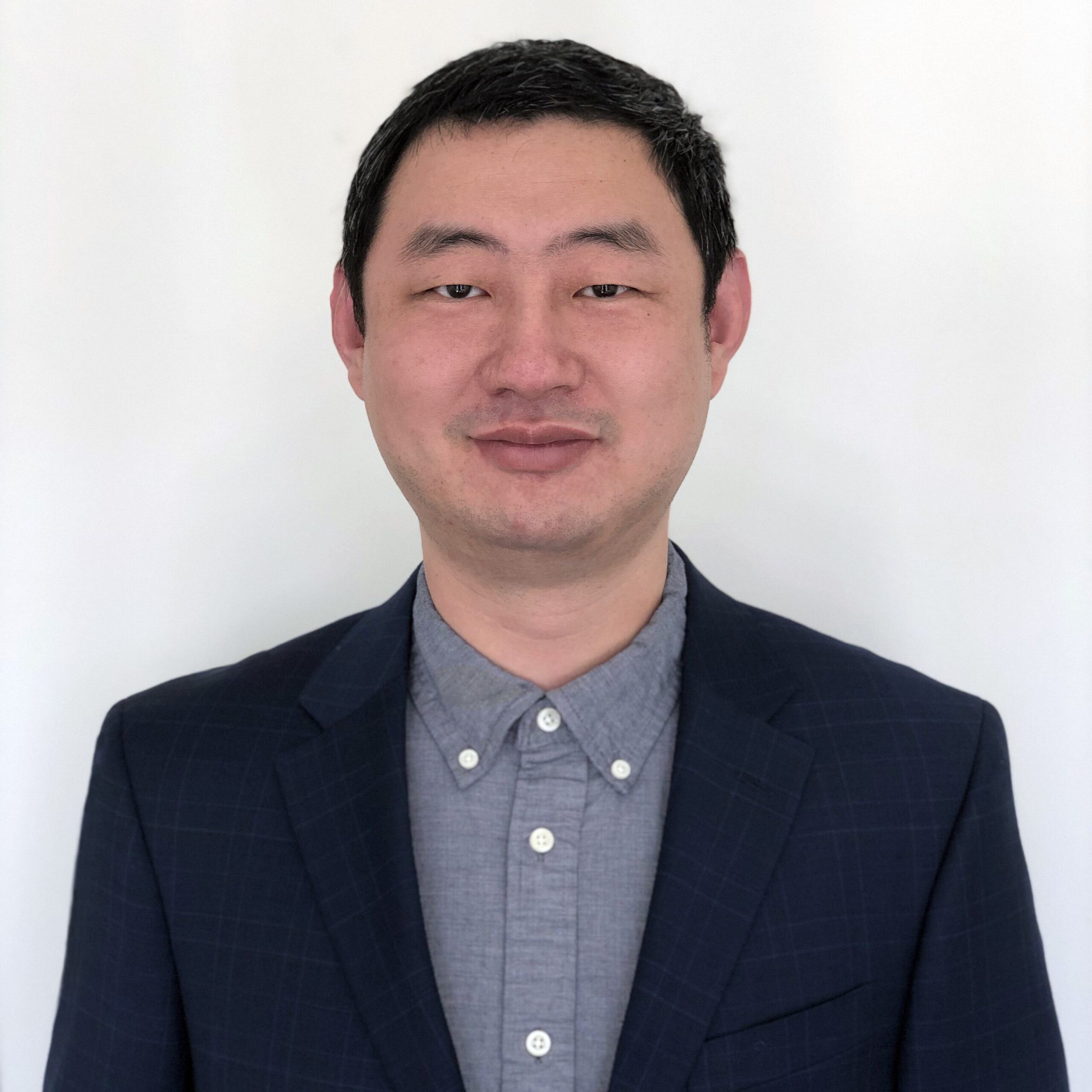
Mu Zhang, an assistant professor at the Kahlert School of Computing, and his research team have received a grant of US $65,421 from Cisco Research to look into safety issues surrounding smart contracts. Zhang’s research aims to develop new techniques to automatically and robustly understand the logic and risks of smart contracts. “It is very exciting to collaborate with industrial partners on solving real-world security problems in Fintech,” said Zhang.
Smart contracts are autonomous computer programs running on top of blockchain technology. Because smart contracts offer the unique ability to enable trustworthy and decentralized transactions, they are used in popular decentralized applications (DApps), such as NFT (Non-Fungible Token) marketplaces, emerging decentralized finance (DeFi) and digital games (e.g. CryptoKitties). Monthly transaction volumes for DApps alone are in billions of US dollars.
Since the use of smart contracts is booming, it is critical to ensure that they are implemented correctly and securely. Yet, current smart contracts can sometimes go wrong. Academic research as well as real-world attacks have shown that flawed logic in smart contracts may lead to severe financial losses. For example, US $60 million was stolen in the infamous DAO attack because of a bug in a smart contract.
Although many researchers have begun looking into the vulnerabilities in smart contracts, identifying faulty logic in them remains difficult. Take auction contracts for example. A “no-reserve” auction is an auction in which the item for sale will be sold regardless of price. As a result, the seller must not be allowed to participate, as the seller can reject an offer simply by placing a higher bid. If it is known that a smart contract is used to implement the auction logic, it can be verified whether it follows the “no-reserve” rule. But how can one tell if the auction is implemented with a smart contract?
Zhang's insight is that the intrinsic logic of financial applications lies in the robust control and data dependencies of smart contract code. For instance, an English auction requires identifying the highest bidder and comparing every new bid with the current highest bid. This means that there is a data dependency between the input (new bid) and the comparison. If a new bid is higher than the previous highest bid, the auction will accept the new bid price as the highest bid. This highlights a control dependency between the comparison result and the following actions.
To capture such dependencies, Zhang plans to perform static control flow and data flow analyses on the code for smart contracts and represent the extracted information as a novel graph. If two graphs are similar, they are likely to be based on the implementation of the same logic. Simply comparing the graph of a program with that of an auction contract can indicate if the auction is implemented via a smart contract program.
Nevertheless, comparing graphs is not trivial. It can be computationally expensive due to the graph isomorphism problem. To solve this problem, Zhang will employ a machine learning technique called graph representation learning. This technique can train a machine learning model to encode only the necessary graph information as a vector. Then, instead of comparing complex graphs, the similarity can be checked quickly check by comparing simple vectors.
Related to this project, Zhang has recently published the paper “Towards Automated Safety Vetting of Smart Contracts in Decentralized Applications,” one of 15 papers that won Best Paper Honorable Mention award at the 2022 ACM Conference on Computers and Communication Security (CCS 2022) in Los Angeles, CA. His research interests more broadly include developing tools to detect, diagnose and address security problems of software systems in different domains.

